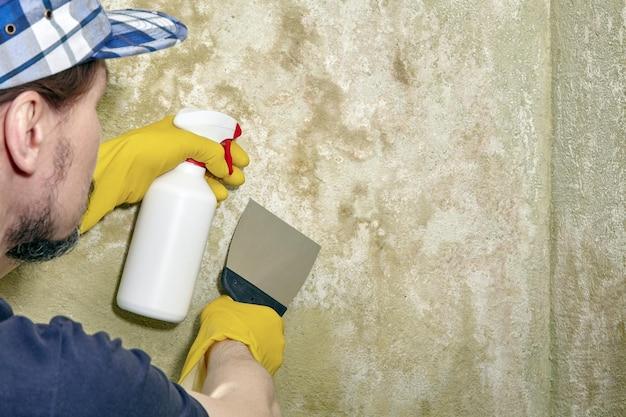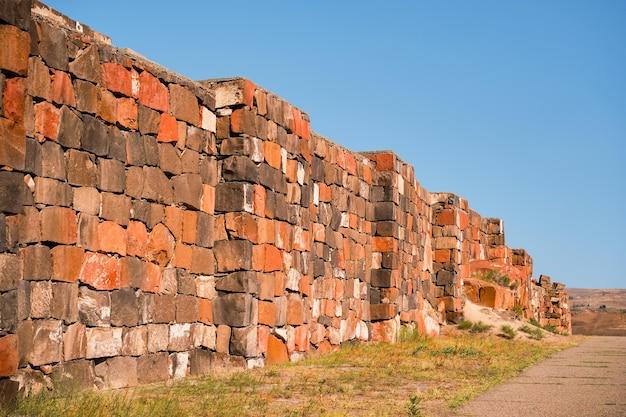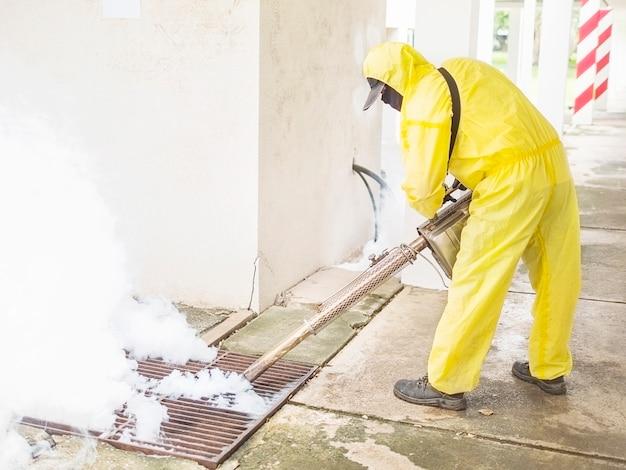When it comes to environmental conservation and construction projects, two terms often mentioned are restoration and remediation. But what exactly do these terms mean? How are they different from each other? In this blog post, we will delve into the definitions and nuances of restoration and remediation, exploring their roles in various contexts, including soil conservation and construction. By the end, you’ll have a clear understanding of these two concepts and how they relate to different scenarios. So, let’s dive in and explore the world of restoration and remediation!
Restoration vs Remediation
When it comes to dealing with the aftermath of a disaster or damage to property, two commonly used terms are “restoration” and “remediation.” While they may sound similar, each term actually refers to a distinct process with its own objectives and methods. Let’s explore the differences between restoration and remediation in more detail.
Restoration: Bringing Things Back to Life
Restoration focuses on bringing damaged property back to its original state. Imagine your house has been hit by a flood, leaving your beloved antique furniture waterlogged and your floors soaked. In a restoration project, the main goal is to reverse the damage caused by the flood and return your home to its pre-disaster glory. Essentially, restoration seeks to recover and revive what has been damaged or lost.
Remediation: Stopping Trouble in Its Tracks
On the other hand, remediation involves addressing the cause of the problem rather than simply reversing the damage. If we revisit the flood scenario, remediation would focus on eliminating the source of the water and preventing any further damage. Remediation aims to stop the problem from getting worse and prevent future risks. It is more focused on mitigating harm and ensuring the environment is safe and healthy.
The Partnership between Restoration and Remediation
While restoration and remediation differ in their primary objectives, they often go hand in hand. In many cases, successful restoration cannot occur without prior remediation. For example, before restoring your water-damaged home, it is crucial to ensure that mold growth has been properly eliminated through remediation. Collaboration between restoration and remediation experts is vital in ensuring an effective and comprehensive recovery.
Choosing the Right Solution for Your Needs
When faced with property damage, it is important to understand which approach is more suitable for your specific situation. If your priority is to restore sentimental or historic value to your property, restoration may be the way to go. On the other hand, if your concern lies in ensuring health and safety, remediation is likely the better choice. In some cases, a combination of both restoration and remediation may be necessary for a complete and satisfactory solution.
Conclusion
To sum it up, restoration focuses on reviving damaged property, bringing it back to its former glory, while remediation centers around addressing the root cause of the damage to prevent further harm. Both are valuable processes in the aftermath of disaster, and working together, they can help homeowners recover and regain peace of mind. So whether you need a restoration superhero or a remediation mastermind, understanding the differences between these two approaches can help you make the right choice for your property.
Remediation APES Definition
Before we jump into the exciting world of remediation, let’s start with the APES definition. So, what the heck is “remediation” anyways? Well, my curious reader, remediation is like the superhero of environmental cleanup. It’s the process of removing hazardous substances from soil, water, or air to restore the affected area to its natural state. Think of it as the ultimate fixer-upper for Mother Nature’s house.
A Pesky Problem Calls for Remediation
Now, why would we need remediation in the first place? Picture this: a spillage of toxic gunk infiltrates the pristine soil of a once-green meadow. Yikes! This is where remediation swoops in, wearing its cape and ready to save the day. Whether it’s caused by human activity or a natural disaster, remediation tackles the mess head-on, fighting to bring back balance and harmony to the ecosystem.
Restoring the Natural Order
Remediation has a nifty bag of tricks up its sleeve to purify contaminated sites. It may employ physical, chemical, or biological methods to clean up the mess. It’s like a real-life magical potion – chemical reactions break down pollutants, bacteria munch away at toxic waste, and physical barriers trap those unruly contaminants. Through this process, the environment is nursed back to health, and the beauty of nature is restored.
Playing by the Rules
Remediation follows a set of guidelines to ensure that everything is done by the book. It’s like a superhero playbook, but with less spandex and more scientific jargon. Different governing bodies, like the Environmental Protection Agency (EPA), set standards that remediation projects must meet. These standards act as the ultimate guide to ensure that the the process is effective, safe, and sustainable.
The Future of Remediation
As our knowledge and technology continue to evolve, so does the art of remediation. Scientists and environmental warriors are constantly innovating new techniques and strategies to combat pollution and restore damaged ecosystems. It’s an ongoing battle, but one that we’re fighting with gusto. With each remediation project, we get a little closer to reclaiming the natural beauty that Earth has to offer.
Remember, remediation is no small feat. It’s a delicate dance between science, nature, and a whole lot of determination. By understanding the APES definition and the importance of remediation, we’re one step closer to becoming champions of environmental restoration. So, grab your capes, folks, because it’s time to save the world, one cleanup at a time!
Remediation vs Restoration Construction
When it comes to construction projects, the terms “remediation” and “restoration” are often used interchangeably. But let me tell you, they couldn’t be more different if they tried. So grab your hard hat and let’s dive into the wild world of remediation and restoration construction.
Remediation: Fixing the Mess
Picture this: you walk into a construction site and it looks like a tornado hit it. That’s where remediation construction comes in. It’s all about fixing the mess, tackling the hazardous materials, and cleaning up the site. It’s like being a construction superhero with a mop and a hazmat suit. Who knew construction could be so glamorous?
Restoration: Bringing Back the Magic
Now, let’s shift gears to restoration construction. This is where the magic happens. Imagine a dilapidated old building, falling apart at the seams. Restoration construction swoops in like a fairy godmother and brings it back to life. It’s like a renovation on steroids, taking something old and making it shine like new. Think Cinderella, but with power tools.
The Showdown: When to Choose Which
So, how do you decide when to go with remediation or restoration construction? Well, it all comes down to the condition of the project. If your construction site looks like a disaster zone, remediation is your go-to. But if you have a historical gem in need of some TLC, restoration is the way to go. It’s like choosing between a mop and a magic wand.
In the battle of remediation vs restoration construction, there are no losers. Both play crucial roles in the construction industry and have their time to shine. So whether you’re mopping up a hazardous mess or breathing new life into an old building, just remember that construction is a never-ending adventure. And hey, who said construction couldn’t be a little bit magical?
What Is the Difference Between Soil Restoration and Remediation
So, you’ve got some soil that’s seen better days. It’s feeling down in the dumps, lacking that pizzazz it used to have. That’s where soil restoration comes into play, my friend. Think of it as soil rejuvenation, a makeover for your dirt.
Restoration is all about bringing back the natural balance and vitality to the soil. It’s like a spa day for your dirt, complete with facials and cucumber water. This process focuses on improving the structure, nutrient content, and overall health of the soil, so it can go back to being the superstar it once was.
Remediation: Soil Therapy on Another Level
Now, let’s say your soil is not just feeling dull but has some serious issues to deal with. It’s got contaminants, pollution, and maybe even a bad case of the sniffles. This is where remediation steps in, like a superhero ready to save the day.
Remediation is all about tackling those specific soil problems head-on. It’s like sending your soil to rehab or therapy, depending on its issues. This process aims to remove or neutralize contaminants and pollutants from the soil, making it safe and healthy again.
Similar Goals, Different Approaches
Though both restoration and remediation aim to restore soil health, they take different paths to reach the same destination. Restoration focuses on nourishing the soil with organic matter, microorganisms, and a dose of tender love and care. It’s like treating your soil to a fancy dinner and soothing music to help it bounce back.
On the other hand, remediation targets the specific issues plaguing the soil. It might involve using scientific techniques, like chemical treatments or specialized microorganisms, to break down or remove contaminants. It’s like bringing in a team of experts to conduct an intervention for your soil.
The Yin and Yang of Soil Health
In a way, restoration and remediation are like the yin and yang of soil health. They complement each other, bringing the soil back into harmony. Restoration focuses on overall soil improvements, while remediation tackles specific problems. Together, they create a powerful duo, giving the soil the TLC it needs.
So, whether your soil needs a spa day or a rehab session, understanding the difference between restoration and remediation can help you choose the best approach to revive your soil. Just remember, no matter what your dirt’s going through, there’s always hope for a fresh start!



